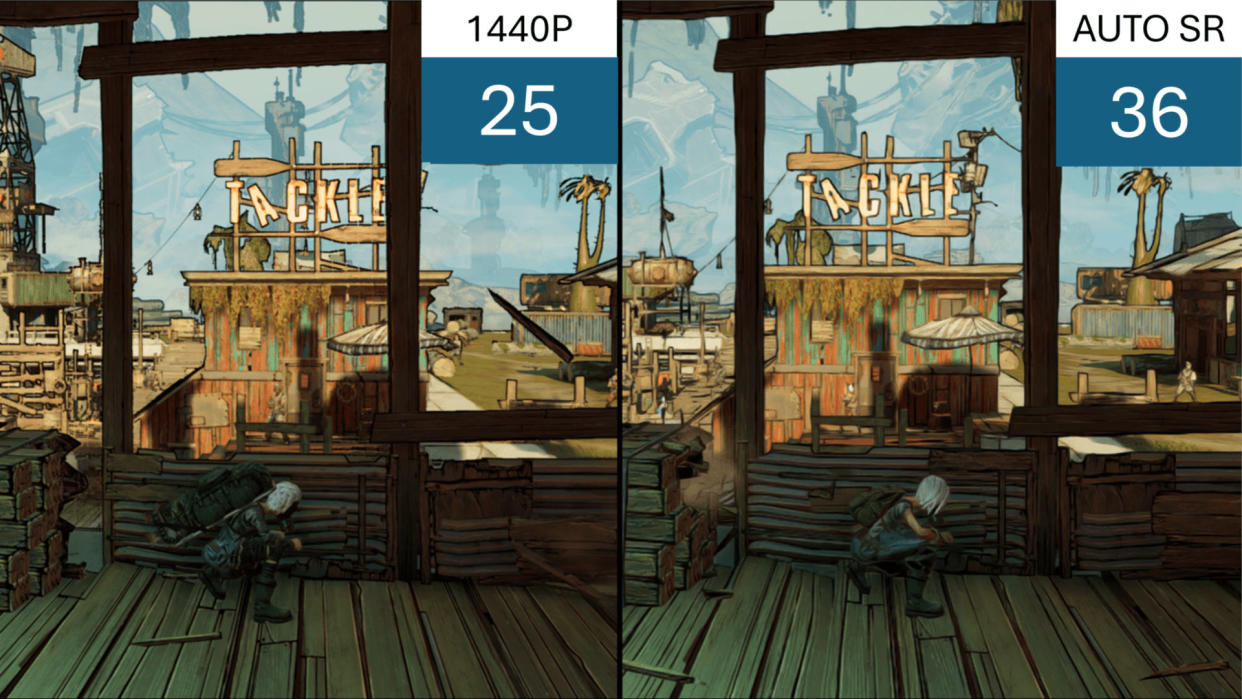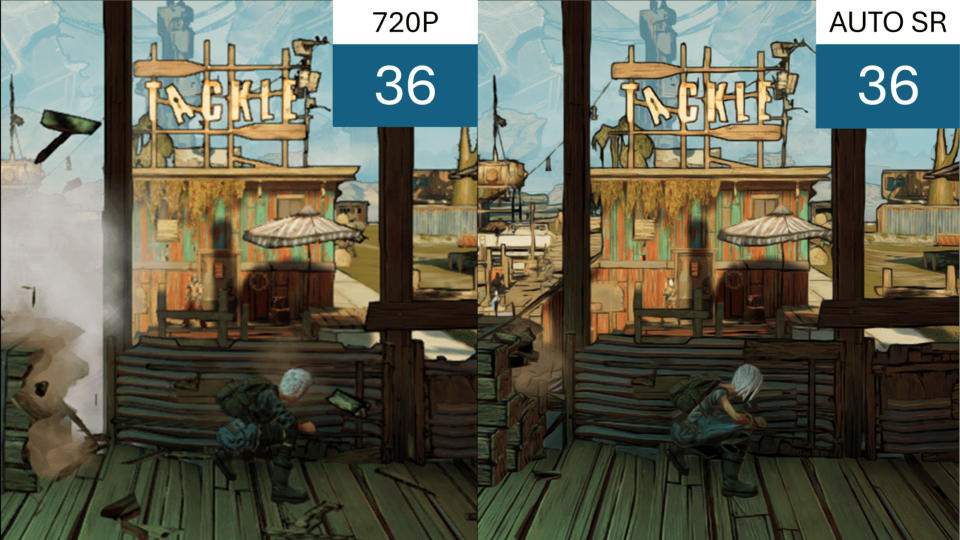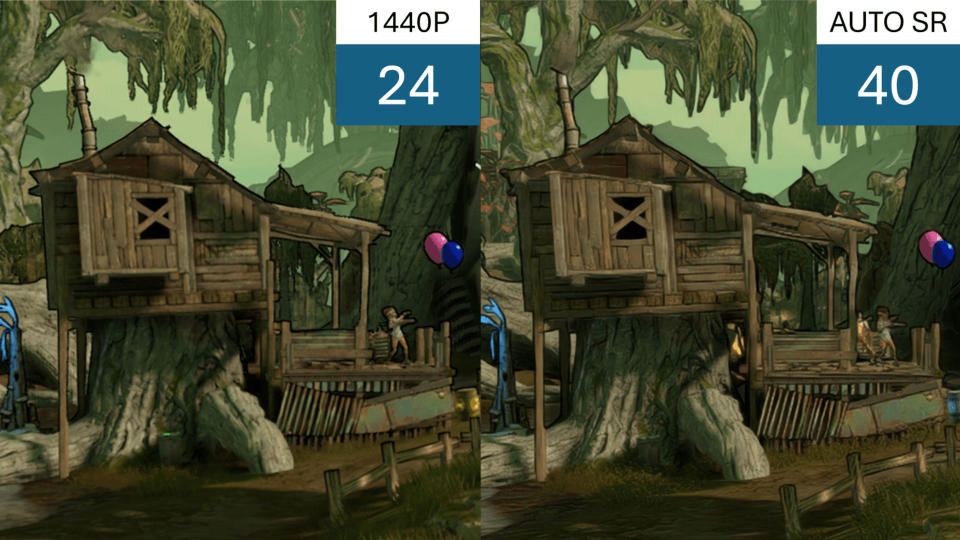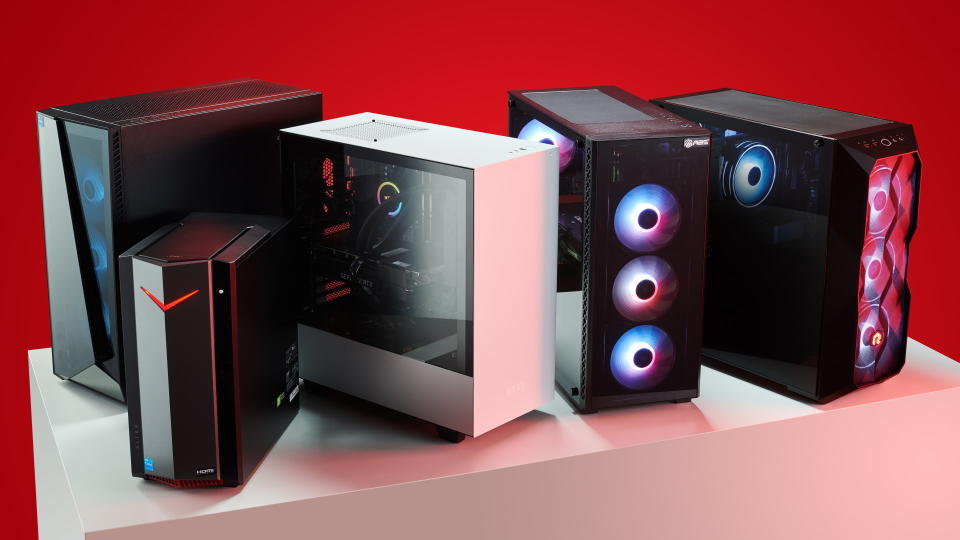Microsoft details how its Automatic Super Resolution upscaler will benefit gamers with Copilot+ AI PCs

News that Microsoft had been developing its own AI-powered upscaler for games, called Automatic Super Resolution, first came to light back in February, before it became clear that this system would only be available on Copilot+ AI PCs. At the moment, the only systems in this ecosystem are Snapdragon X laptops from Dell, Asus, MSI, and others. But as Microsoft explains in a blog on how Automatic Super Resolution works, the PC just needs to have a suitable NPU in its main processor, so it could become available to more gamers.
Super resolution, or upscaling as it is generally called, involves rendering a frame at a lower resolution before running a bunch of math operations to to raise the resolution to that of the monitor. The obvious benefit is that the game will run a lot faster, but upscaling often creates lots of visual artefacts, especially with transparent objects, particles, and fast motion.
Nvidia uses a convolution neural network, via Tensor cores on GeForce RTX graphics cards, to scan an upscaled frame and clean up any issues. Intel does the same with its Arc-specific XeSS but its generalised version is the same as AMD's FSR—a lot of clever shader routines calculate the best possible upscaled frame, rather than using AI.
Microsoft's Automatic Super Resolution (ASR) works a little bit like DLSS and Arc-only XeSS, in that a neural network is used in the upscaling algorithm. But rather than use the specialised cores in a GPU, ASR runs the network on an NPU, a neural processing unit. At present, these are only found in certain CPUs—Intel's Meteor Lake, some of AMD's APUs, and Qualcomm's Snapdragon X—and handle math routines that are common in AI workloads.
The idea behind the inclusion of an NPU in a processor is that AI stuff can be offloaded from the CPU or GPU, and run on a low-power section of the chip. They're a bit like the matrix cores you get in an Intel Alchemist GPU.
But even if you have a PC with any of those chips, you won't necessarily be able to active ASR, as it's currently limited to Copilot+ AI PCs using Snapdragon X processors. Since such laptops don't pack a powerful GPU, gamers will want to enable upscaling wherever possible, to ensure games run as best as they can. That normally relies on developers integrating DLSS, FSR, or XeSS into their game but ASR bypasses that requirement entirely.
That's the good news about ASR. Now, here's the not-so-good news.

This Borderlands 3 comparison shows how Auto SR's neural network can improve 720p images

This Borderlands 3 comparison shows native 1440p rendering (left) vs 720p Auto SR (right)

This Borderlands 3 comparison shows native 1440p rendering (left) vs 720p Auto SR (right)
Through the use of a simple toggle in Windows, the NPU-powered upscaler will get automatically applied (hence the name) to any game that is compatible with ASR. Unfortunately, there aren't many games on that list—just 14 in total and only 11 are guaranteed to work right now.
It's also worth noting in Microsoft's blog that ASR doesn't rely on temporal frame information from games, unlike DLSS, FSR, and XeSS. Instead, it just transfers the fully rendered low-resolution frame to the NPU, which then handles the upscaling and image correction process, via the use of a large convolutional model. Once that's done, the full-resolution frame then gets displayed.
Your next machine

Best gaming PC: The top pre-built machines.
Best gaming laptop: Great devices for mobile gaming.
Other upscalers work entirely within the GPU's domain, helping to ensure it's all processed as fast as possible. Microsoft says that using the NPU like this for ASR adds an additional 'frame of latency' to the game, though it goes on to claim that "in our testing, most players didn’t notice this delay, and when they did, the sharper graphics and faster frame rates more than made up for it, enhancing the overall gaming experience."
This is something that you don't get with any of the upscalers and given that Qualcomm's Snapdragon X range supports AMD's FSR system, I suspect gamers and developers are more likely to lean on that upscaler rather than Microsoft's. The proof will be in the pudding, of course, and if Automatic Super Resolution works well, despite its limitations, then Copilot+ AI PC owners can at least enjoy a decent gaming experience.
In theory, at least. When we get our hands on some Snapdragon X laptops in the office, we'll be sure to give it a thorough test.


